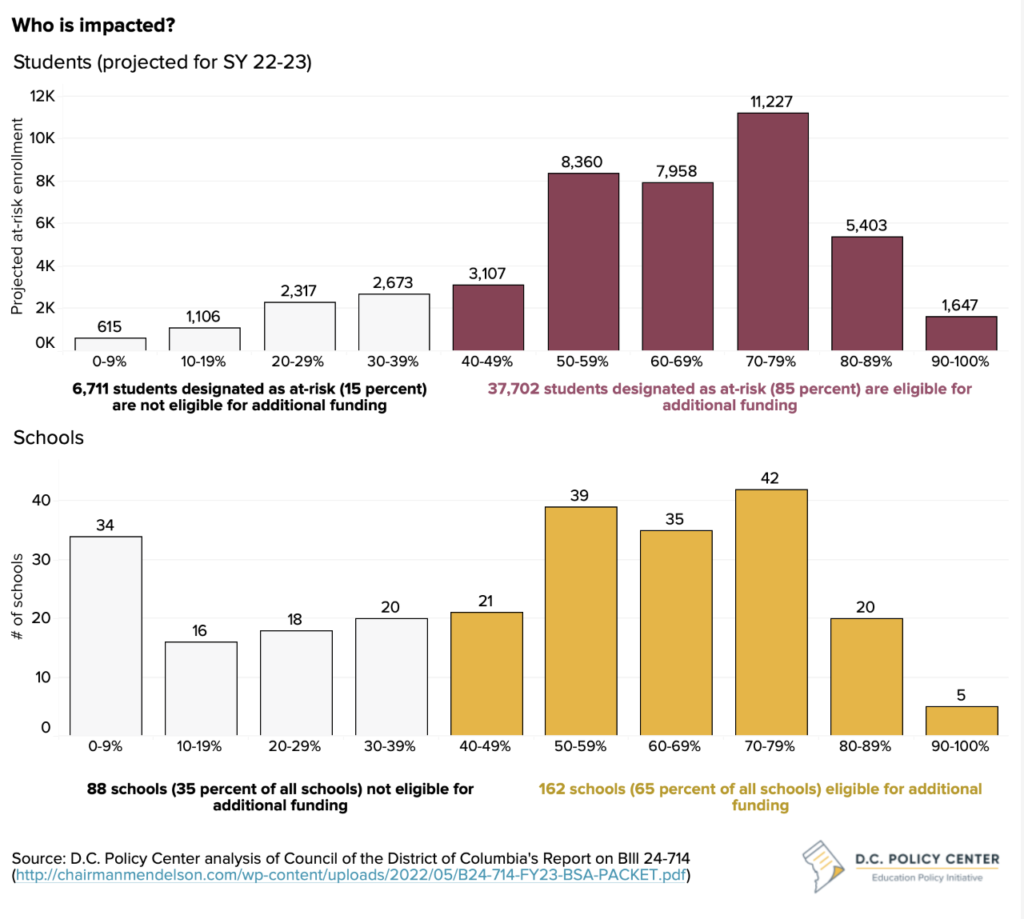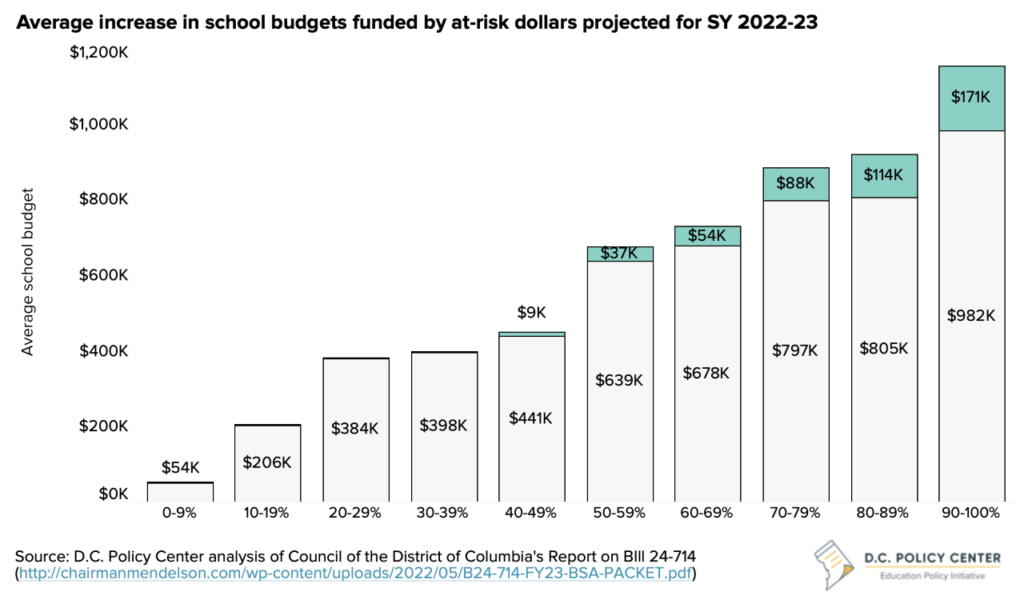This week, the Council of the District of Columbia added a subtitle to the FY23 budget with two additional weights to the student funding formula, which would provide additional funds to schools where 40 percent or more of the student population is designated as at-risk, and to schools where 70 percent or more of the student population is designated as at-risk. Students are defined as at-risk if they qualify for public benefits (Temporary Assistance to Needy Families, TANF, or Supplemental Nutritional Assistance Program, SNAP), experience homelessness, are involved in the foster care system, or are overage in high school.
D.C. currently provides additional funding for at-risk students through a weight of 0.24 ($2,981), and an additional 0.06 for overage high school students ($745) in the student funding formula. This results in $136 million in funding for at-risk students in the FY23 budget. The new at-risk concentration weight would add $10.3 million, or 8 percent, to this previous total.
At the school level, the concentration funding will have different impacts for students who are designated as at-risk depending on the student population their school serves. At schools where zero to 39 percent of students are designated as at-risk, students will receive no additional at-risk funding. Students attending eligible schools that serve at least 40 percent of students designated as at-risk will receive an additional amount averaging $275 per student designated as at-risk. The per student amount ranges between $59 per student for schools serving between 40 and 49 percent of students who are at-risk and $520 per student for schools serving at least 90 percent of students who are at-risk. This can be compared to distributing this additional funding for at-risk equally to all at-risk students regardless of where they attend school by increasing the at-risk weight from 0.24 to 0.26 to provide an additional $233 per student designated as at-risk.


The majority (85 percent) of at-risk students attend schools that will benefit from this additional at-risk concentration funding, but the 15 percent of at-risk students attending schools where less than 40 percent of students are designated as at-risk will not receive additional resources. Out of 250 schools, 162 are slated to receive additional concentration funds, with the majority of schools serving between 50 to 79 percent of students who are designated as at-risk – these are the schools receiving on average between $37K and $88K of additional at-risk concentration funding (about 10 percent of at-risk funds).


In school year 2022-23, the average per school amount of additional at-risk concentration funding is $64K. Schools will receive more funding if they serve more students designated as at-risk, ranging from an additional $9K for schools with a student population that is between 40 and 49 percent at-risk and an additional $171K for schools serving at least 90 percent of students who are at-risk. Unlike the rest of the money that flows through the student funding formula to DCPS or public charter Local Education Agencies (LEAs) to then distribute to schools, this at-risk concentration funding would be allocated directly at the school level.
